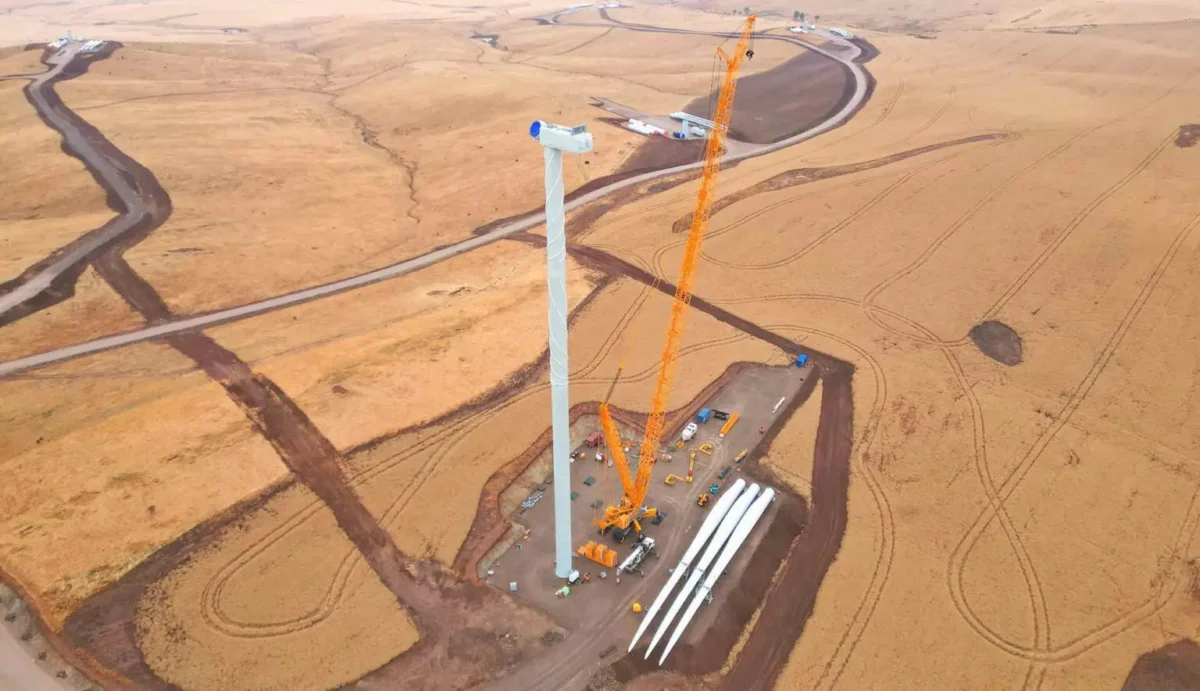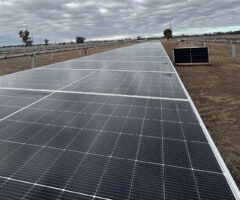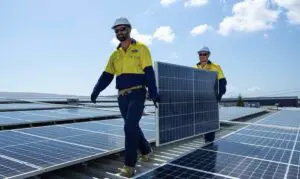Wind and solar set new output records on Monday, as a sweltering, early summer heatwave sent grid demand soaring to new highs.
The records were set across the main grid, known as the National Electricity Market (NEM), and particularly so in South Australia, already the country and world’s leader in the uptake of wind and solar with an average 72 per cent share of demand over the last year.
GPE NEMLog says in South Australia, the output of variable renewables – large scale wind and solar and rooftop PV set a new record of 3,480.6 MW at 12.50pm (AEST), easily beating the previous high of 3,143 MW set in February this year.
It was able to do this because native demand – as a result of temperatures soaring above 45°C in some parts of the state – also hit a record around the same time setting a new peak of 3,623 MW at 12.45pm (AEST), beating a previous peak of 3,511 MW also set in February.
South Australia often has the ability to produce that much variable renewable energy, but large amounts are usually curtailed because demand is not so high, and because the capacity of links to Victoria and the amount of battery storage is still relatively low.

Source: OpenNEM.
The state’s portfolio is also being boosted by the ramping up of capacity at what will be the biggest wind project in South Australia, the 412 MW Goyder South facility which was sending more than 120 MW into the grid in the early afternoon.
What’s interesting about the South Australia situation is that as state demand hit an unprecedented high, the wholesale price remained below zero – at minus $20/MWh – because 96 per cent of that demand was being met by renewables.
GPE’s Geoff Eldridge also noted that the heatwave, which sent temperatures up to 16°C above average in Victoria, NSW and Queensland, set new demand records across the NEM, with native demand hitting a new peak of 39,164 MW at 1.25pm, up from 38,638 MW in February.
Earlier in the day large scale wind and solar across the main grid hit a new peak of 12,261.8 MW, a rise from its previous peak of 11,644 MW reached in July this year.

Source: OpenNEM
Eldridge noted that South Australia’s record demand was nearly matched by wind and solar generation, underscoring renewables’ role in offsetting peak grid stress.
“The ability of renewables to scale alongside record demand highlights their growing contribution across both regional and national levels,” Eldridge wrote in a post on LinkedIn.
“Flexibility and firming are key. Managing periods of high demand and variable renewable output underscores the need for energy storage, demand response, and firming capacity to maintain stability.
“South Australia continues to demonstrate how a grid with high shares of VRE (variable renewable energy) can function reliably during periods of extreme demand.
Renewables analyst and Windlab engineer David Osmond also noted that the total demand peak reached in South Australia on Monday was 2.1 times the annual average, with the rooftop solar 3.4 times the average, utility scale 3.1 times, and wind 1.7 times.
“The peaky nature of SA demand would also present challenges to a nuclear fleet running in South Australia,” he wrote on LinkedIn. “A 1.8 GW nuclear plant could produce 100% of Sth Australia’s annual demand at a capacity factor of 91%. But it would have fallen 1.6GW short of meeting SA’s peak demand.”
He said 3.5 GW of nuclear could have met South Australia’s peak on Monday, but would have had little to do for the rest of the year, and would require significantly more transmission and storage.
Eldridge says a new demand peak was also set in Victoria on Monday – reaching a new high of 9,851 MW at 5pm (AEST), beating the previous peak of 9,667.0 MW set in January, 2020.
“At the time of the maximum operational demand, the Victorian wholesale price remained relatively subdued at $223/MWh, tempered by contributions from wind generation and some late-afternoon rooftop PV and utility solar output,” Eldridge writes.
“These contributions demonstrate how renewables are increasingly supporting grid stability even during peak summer evening demand periods.
“As extreme weather events become more frequent, investing in storage solutions, strengthening grid flexibility, and enabling demand management will ensure reliable supply—even during peak summer evening demand periods.”
Eldridge also notes that the new peak came just eight days after the dominance of rooftop solar put operational demand in Victoria at its second lowest level ever – prompting a “minimum load warning” from the market operator because there was potentially not enough demand to support the minimum amount of “baseload.”
Not exactly ideal for the Coalition’s plan for “always on” baseload nuclear. See also: Tesla says Dutton’s nuclear plan will result in “severe” curtailment of household rooftop solar stability.
In other parts of the grid, the situation is not so serene, as the share of renewables is considerably lower and the grid supply is more dependent on ageing coal generators, which are notoriously unreliable in the summer heat.
In NSW, the biggest grid with the biggest portfolio of coal generators, two key units – at Eraring and Bayswater – are off line due to unplanned outages and will not return until the end of the week.
That has forced the market operator to issue a series of lack of reserve notices – LOR1 and LOR2 – and although it expects to manage the situation by cancelling network upgrades and securing other supply options, the situation could deteriorate rapidly if another big fossil fuel plant also fails.
“The NEM’s performance today underscores both the challenges and successes of Australia’s energy transition,” Eldridge noted.
“As heatwaves become more frequent, the ability to integrate renewables with grid resilience and storage solutions will be key to managing demand extremes.”








